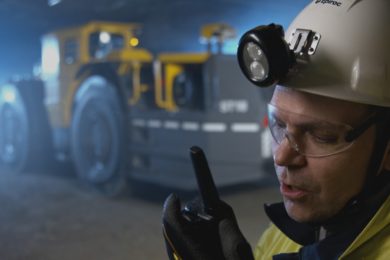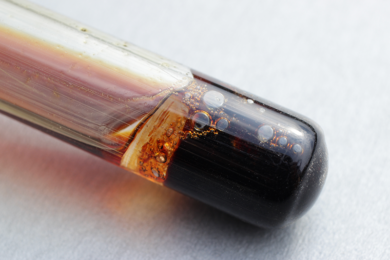It is fair to say Epiroc’s September quarter results surprised on the upside.
Amid the COVID-19 pandemic, orders received held up, dropping just 2% to SEK9.37 billion ($1.07 billion) compared with orders in the September quarter of 2019. In fact, on an “organic basis”, orders received were up 10% year-on-year.
At the same time, operating profit remained stable, only decreasing by a little over 5% year-on-year to SEK1.82 billion.
The Epiroc management team took the view that this performance was no exception, issuing a plan to propose a second dividend of SEK1.20/share at the Extraordinary General Meeting on November 27.
Investors viewed these numbers positively: its Stockholm-listed shares closed 8% higher.
While the revenue numbers were dominated by the company’s aftermarket business, which generated 69% of the SEK8.7 billion, it was on the equipment side where some very interesting developments were observed.
The company recorded a 25% year-on-year organic increase in equipment orders in the period, reinforced by a few large orders such as those from Norilsk Nickel. The majority of orders were small- to medium-sized contracts of, say, one or two pieces of equipment, according to Helena Hedblom, President and CEO.
“More customers have taken the decision to invest,” she told IM, adding that this development followed two quarters where mining companies were hesitant to commit.
Within these new orders were several automation agreements, the company said, alongside new battery-electric equipment and digital bookings.
Epiroc has continually committed to advancing technology related to digitalisation, automation and electrification, and it appears the fallout from COVID-19 and the sector’s sustainability drive are strengthening demand for these products.
“I see clearly the interest and demand for automation and tele-remote solutions is increasing in light of the pandemic,” Hedblom said of how COVID-19 had impacted the company’s product focus.
“The key to success for us is we have built up these regional application centres that have given us the capability to deploy automation and teleremote systems without international travel.”
Still on the topic of automation, Epiroc revealed even more today.
The first snippet of news, which Hedblom snuck in during the webcast, was that the company had secured an order for an autonomous fleet of surface drill rigs from an unnamed customer in southern Africa.
The second, which she teed up in the official results release, built on in the webcast, and expanded on for IM, was the successful deployment of “unique solutions” for OEM-mixed fleet automation.
In surface mining, the company, in tandem with ASI Mining, has retrofitted automation on Caterpillar haul trucks running at Ferrexpo’s Yeristovo iron ore mine, in Ukraine. The market had already been told about this.
Solutions for OEM-mixed fleet automation underground was very much representative of ‘news’.
“For underground, we have deployed very advance traffic management solutions for mixed fleet automation where we have automated our loaders and then machines from another OEM,” she said. “That is a breakthrough.”
While Hedblom was not able to say too much more about the project, she did acknowledge the solution was a few years in the making and had been advanced with an existing customer.
“The traffic management solution is based on the partnership we have with Combitech,” she explained. “It is a traffic management system being used in airports and subways in the big cities of the world, so is a highly advanced solution.”
Such a partnership dates back to 2017 when Atlas Copco (the Epiroc predecessor) signed an agreement with the Saab subsidiary to advance its digitalisation and automation initiatives.
There was also some news on the battery-electric front, too.
Back in November 2018 at the company’s Power Change Days event in Örebro, Sweden, Erik Svedlund, Global Marketing Manager – Electrification, mentioned the potential for retrofitting battery-electric technology on Epiroc diesel equipment. He said there was also the potential for such a solution being employed on other OEMs’ machines.
IM asked Hedblom about this.
“We have developed the first retrofit kit for a ST1030,” she replied, explaining that the company was “coming close” to releasing such a solution to the market.
While the company has electrified its Scooptram ST7 and its Scooptram ST14, the 10 t payload LHD has been, to this point, only available in diesel-powered form.
She added: “We have also partnered up with a couple of other OEMs that will use our battery system.”
This could be similar to how Railcare, a Swedish manufacturer of machines that keep railways safe and clean, will use Epiroc’s modular and scalable battery-electric technology platform (including batteries supplied by Northvolt) to power its Multi-Purpose Vehicle for rail maintenance applications.
“It goes very much hand-in-hand with the OEM-agnostic approach that we strongly believe in,” Hedblom said.
Those words are backed up by some substantial actions.










